Interface (1989) #1-8,
ESPers (1990)
by James D. Hudnall, Paul Johnson and others
Oh, right. This is the continuation of the ESPers series, published by Eclipse Comics. I quite liked it and had decided to read the followup series, anyway, so that’s nice.
Oh, OK. Hudnall goes for a different storytelling style here than in the ESPers series: He leans in to the “multiple first person narration” thing that was all the rage around the time (or perhaps starting to get slightly passé in 1989?).
The storyline picks up after the fourth issue of ESPers, and the first three issues more or less covers the same ground as the fifth issue of that series. The fifth issue was originally the start of a new story arc, so this makes sense. However, what doesn’t make sense is spending a lot of space on retelling the plot of the first four issues… Epic has a mania for doing recaps, and I hope that we’re not getting so much of that in this series.
Oh, yeah! Carl Potts had taken over as the editor-in-chief (or whatever) of Epic Comics in late 1989, so perhaps we’ll cover that now, in the middle of this post about Interface. As good a place as any.
As you probably know, Epic Comics was an outgrowth of the Epic Illustrated magazine, edited by Archie Goodwin. Marvel editor-in-chief Jim Shooter had managed to alienate a lot of Marvel’s top talent in the late 70s, so Epic Comics was set up as a way to lure those creators back (Jim Starlin, Steve Gerber, etc) by offering them two things: Creator-ownership, and not having to interface with Shooter directly. So Goodwin, well-liked generally among creators, became the editor-in-chief of Epic Comics.
Initially Epic Comics sales were great, but as the US direct sales industry reeled from the black-and-white boom and bust (which made comics retailers cut back across the board on all comics), this changed. Goodwin, never a fan of super-hero comics, was convinced to retool Epic into a slightly-more-mature super-hero publishing venture, replete with a shared-universe line of comics (Shadowline) and upscale versions of Marvel books.
This failed, too, and… Goodwin quit.
GSB&HAH writes in The Comics Journal #130, page 28
Archie Goodwin, founder and editor-
in-chief of Marvel Entertainment
Group’s Epic Comics line, resigned ef-
fective May 19 because of differences
with Marvel’s new owners — The An-
drews Group Inc. — and has joined
DC Comics, where tentative plans call
for him to develop a new DC imprint,
much as he did at Marvel seven years
ago with the establishment of the Epic
line.
Neither Goodwin nor Marvel Com-
ics Editor-in-Chief Tom DeFalco could
be reached for comment. DC Spokes-
woman Tammy Brown, on vacation,
was unavailable for comment.
Archie Goodwin.DC announced Good-
win’s hiring in a press release sounding
a distinct note of triumph.
“We’re thrilled that Archie will be
added to our editorial staff,” the release
quoted DC Vice President-Editorial
Dick Giordano. “Whenever we sat
arou1Ki and dreamed amut people we’d
like to have working with us, Archie’s
name was always mentioned. We’re
glad he finally saw fit to make this par-
ticular dream a reality.”Epic Comics was announced in
Summer 1982, an offshoot of the two-
year-old Epic Illustrated anthology, a
nationally-distributed magazine edited
by Goodwin and designed to compete
with Heavy Metal for the burgeoning
adult comics market. Though the mag-
azine died in 1986 after 34 issues, the
Epic comic book line has prosEkred,
and is Marvel’s only venue for creator-
owned comics, publishing such works
as Sergio Aragones’ Groo the Hånder-
er, Katsuhiro Otomo’s Akim, Pat Mills
and Kevin O’Neill’s Marshall Inw,
Rick Veitch’s The One, and Jim
Starlin’s Dreadstar (the imprint’s first
release, November 1982).Marvel Staff Editor Carl Potts has
been named Gtxxlwin’s replacement as
Epic Editor-in-Chief. Potts credits in-
clude writing Epic’s Alien Izgion and
Marvel’s Punisher War Journal and the
upcoming Shadomnasters series, and
editing Marvel’s The Punisher, Dr.
Strange, Power Pack, Cloak & Dag-
ger, and Moon Knight.Marvel
was absorbed January 1 by The An-
drews Group, a holding company led
by Revlon cosmetics chairman Ronald
Perelman (see Newsuatch, Journal #1261.
But a routine financial examination Of
Marvel left Andrews dissatisfied with
the sales performance of most Epic
titles and reports began circulating
almost immediately that Epic would be
“reorganized” to improve profitabili-
ty. By last March, rumors abounded
that Epic would be dismantled and its
titles merged with the regular Marvel
line, or that new editors — including
Marvel Editor-in-ChiefTom DeFalco
— would be assigned to strengthen
Epic’s offerings.As recently as
last February, both Goodwin and De-
Falco denied any real problems and,
in an interview with Comics Buyer’s
Guide published March 3, DeFalco in-
Sisted that the line, Goodwin,
secure.
“There are no plans to make any
changes in Epic’s editorial material,
policy, or business arrangements, par-
ticularly in our commiunent to creator-
owned projects,” DeFalco told CBG.
Archie’s always been autonomous;
he will conunue to chart the creative
directions, as he always has. Any
changes will be to increase Archie’s
duties and responsibilities, not de-
crease them… There is no plan to
replace the Epic imprint with a Marvel
imprint.”Those statements notwithstanding,
reporß of disagreement txtueen G(xxi-
win and the new Marvel upper-man-
agement grrsisted, and on April 19
Goodwin tendered his one month
notice, leaving Epic May 19 and join-
ing DC Comics II days later.
At the time he announced his depar-
ture, Goodwin told CBG, “I’m inter-
ested and tempted the DC offer, ob-
viously, but my actions grow out of a
growing unhappiness with the reorgan-
ization of Epic. Originally, it seemed
it would uork out fine. In practice,
many of the working details Of the
arrangement bothered me a great deal
“I feel that, rather than stay around
and be unhappy, and make the people
at Marvel unhappy, it’s probably go-
ing to be better for all of us to go our
own ways,” the May 12 CBG quoted
him.Goodwin emphasized dut his depar-
ture would not end “Marvel(‘sl com-
mitment to the Epic imprint and future
creator-owned projects.”
According to DC’s announcement,
Goodwin will head a distinct DC im-
print, though neither his title nor the
imprint have been named.
Quoted in the announcement, Gior-
dano said, “Since he’ll be developing
it, it is too early to make any announce-
ments about details.”
Goodwin told CBG he would be
developing a separate line Of characters
for DC, but “it will not in any way
duplicate the situation I had at Epic.’ ..
The best correlation I can come up
with is that, as I developed the Shadow
Line at Epic, I’d do the same sort of
thing at DC.”New Epic Editor-in-Chief
Carl Potts reflected on his predecessor,
and his own plans: “Archie had a very
strong presence in the Epic books. He
was very popular. He even did bis own
cartoons on the editorial page. I can’t
compete with that; I can’t even to’. I’yn
more subdued.
“But I decided to take a chance,” he
added, calling the new job “a chal-
lenge.”
‘ ‘Marvel has 16ng-range goals for
Epic, and for the marketplace,” he
Said. “I think comics is an unlimited
medium for subject matter that should
be explored in a variety of ways: en-
joyable, artistic, commercial — and
sometimes uncommercial.”
Potts said he plans no immediate
changes in the Epic imprint, claiming
two types of titles comprise the line:
“more sophisticated comics” such as
Electra: Assassin and The Shadowline
Saga, and “third-party books” — titles
produced by their creator-owners and
published through Epic — such as
Marshall law, Groo the %ånderer,
upcoming Clive Barker adaptations.
Guy. Goodwin has enjoyed a
long career in comics, spending the
majority Of his efforts with Marvel and
DC, between which he has jumlkd a
few times. He has written Fantastic
Four, Barman, Flash Gordon, Star
Wars, Blazing Combat, am] the upcom-
ing Nick Fury/Wblverine graphic novel
drawn by Howard Chaykin. Goodwin
sis perhaps most fondly recalled for his
mid •70s editing stint on DC’s Derec-
tive Comics, for which he created and
wrote the Manhunter series drawn by
Walt Simonson.
Several calls to Goodwin’s new DC
office went unanswered; a DC staffer
described Goodwin as “very busy.”
Sorry for quoting at length (and the OCR isn’t very good here).
So did he quit or was he fired? It’d be hard to guess, but that this was a result of Marvel wanting Epic to become something else than it had been until now is obvious. And that the Epic comics weren’t selling sufficiently.
We’ll see in upcoming blog posts what effect this has on Epic, but it doesn’t have any immediate impact. Which is probably not surprising: Carl Potts, who took over, had worked for and with Goodwin on Epic since the start. The major changes don’t start until… a couple years after Goodwin left? We’ll find out. Well, or at least I will. You can bail whenever you want!
The line of comics he was supposed to come up with at DC never happened, I think? But he continued working thee, both as an editor and writer, until the mid 90s. He died in 1998.
ANYWAY! Back to Interface. That’s what we were talking about. Remember? No?
Johnson’s artwork is somewhat reliant on photo reference, but it often looks like he uses a fish-eye lens? Angles are odd and people grow huge noses at the drop of a hat.
As recaps go, Hudnall at least sets up an in-story explanation for it: One of the characters get amnesia, and slowly remembers what happened in the four ESPers issues, and there’s another character that investigates the same events. But still: It’s really weird spending this much time on the recaps. It’s not like what happened was very complicated or, well, interesting, but they end up using much of the three (!) first issues on Interface to recap what happened in the four (!) ESPers issues.
That’s obsessive and excessive.
It reads quite well, but much of the time reading this, I was going “YES THINGS HAPPENED! CAN”T THINGS HAPPEN NOW INSTEAD!?” And I didn’t even remember what had happened, so I should have been interested, but it dragged the narrative seriously.
And Hudnall hasn’t really gotten a grip on the first person narration thing. You can have it be like a diary type thing (think Rorschach) or you can have it be the character’s thoughts in the situation, but what we have here is in the uncanny valley between those modes. Instead it’s like non-first-person narrative, explaining to the reader who the characters are, doing recaps, and explaining what they’re going to do. But with a sprinkle of peckerwoods.
Finally, though, things start happening, and it’s a pretty fun read. It’s got several shady organisations working against each other, most of them trying to kill Our Heroes, and stuff blows up etc. It’s fine, but it could have been three issues.
In issue seven, we get an “epilogue” with artwork by Bill Koeb. Pretty moody.
The recaps continue, though.
And then: Issue eight! Insane artwork by Dan Brereton! And I must admit that I have no idea what it’s about.
There was a … brain guy … putting Our Heroes into an imaginary world… and… something.
And then the mutants I mean ESPers enrol in a school for gifted mutants I mean ESPers.
I think?
THE END.
It didn’t make much sense, but I guess the book was cancelled and Hudnall had to fill an issue without being able to use the plot he had ready. At least that’s what it reads like.
BUT! Epic reprinted the ESPers series, making the infernal recapping useless, because they could have said on the first page of the first issue* (“* as told in ESPers, now available in paperback from Epic”) instead of wasting so much space.
But I don’t know exactly when it was published: It wasn’t mentioned in the Interface book at all. Another weird thing about the entire project.
I already covered the series over on the Eclipse blog, so I’m not going to do that again, but just note that there’s an introduction by Hudnall here…
… that things did indeed happen as I’d just read in the recaps…
… and that the fifth issue, also included in the reprint, has the plot covered by the first three issues of Interface (more or less).
But what did the critics think?
Thomas Long writes in Amazing Heroes #174, page 80
Actually, this new Epic
series is a continuation of an earlier
book, ESPers, by writer James Hud-
nall and artist Paul Johnson. This fact
is a double-edged sword for this pre-
miere issue—positively, because there
is a certain amount of momentum
here; and negatively, much of
the book is narration-heavy in an at-
tempt to fill in the gap between the old
and new series. There is a sense of
coming in late and Hudnall’s familiar-
ity with the characters and situations
compensate only slightly.[…]
It is this kind of contrast that unsettles
Interface: there is not enough sense
of wonder to make it a believable
fantasy, nor is there enough energy to
make readers overlook the flaws. This
is not necessarily a bad first issue,
only in the concept (how many
other ESP/PSI characters can you
think of without repeating a power?)
and direction. The book doesn’t seem
to do anything different—at least not
yet.
The art is acceptable—Johnson’s
layouts move along nicely and he has
some wonderful facial shots. There
are problems with the coloring,
though. It is, in turn, either too harsh
or too muted without ever finding a
nice balance between the extremes.
I think this series was collected and reprinted by Image in the late 90s.
Admin note: I’m taking a break from this blog now. It’s taken a whole lot more time than I thought it would, and I really have a bunch of other stuff I have to do. So… perhaps see you back in… a few month’s time?
There aren’t that many comics left to do: Excluding Groo, it’s less than two shortboxes:
So I’ve already read two thirds of the comics, but I’ve got two thirds of the series left. *math* Yeah, something like that: The series grow a lot shorter towards the end of Epic’s existence than they were at the start.
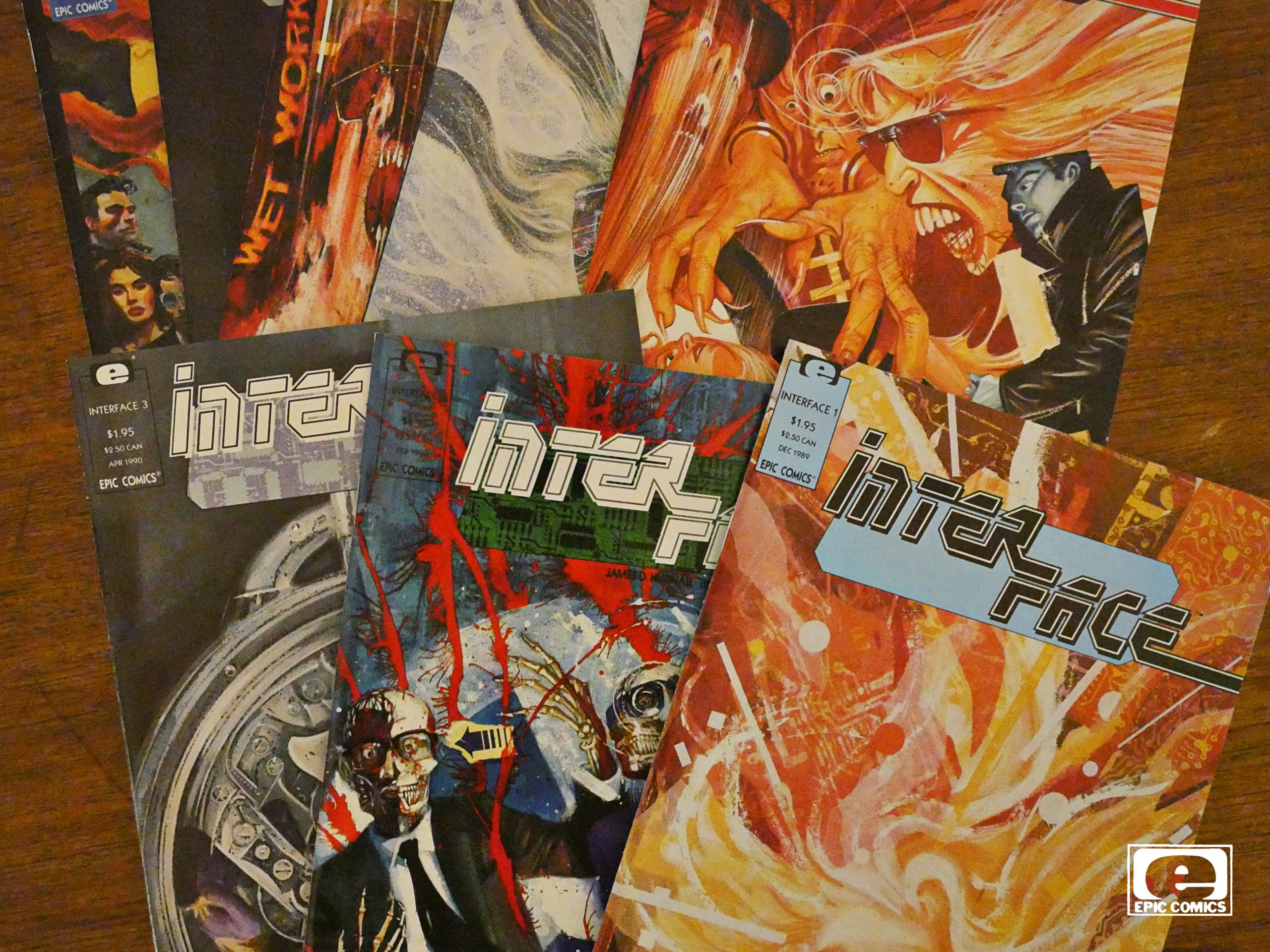
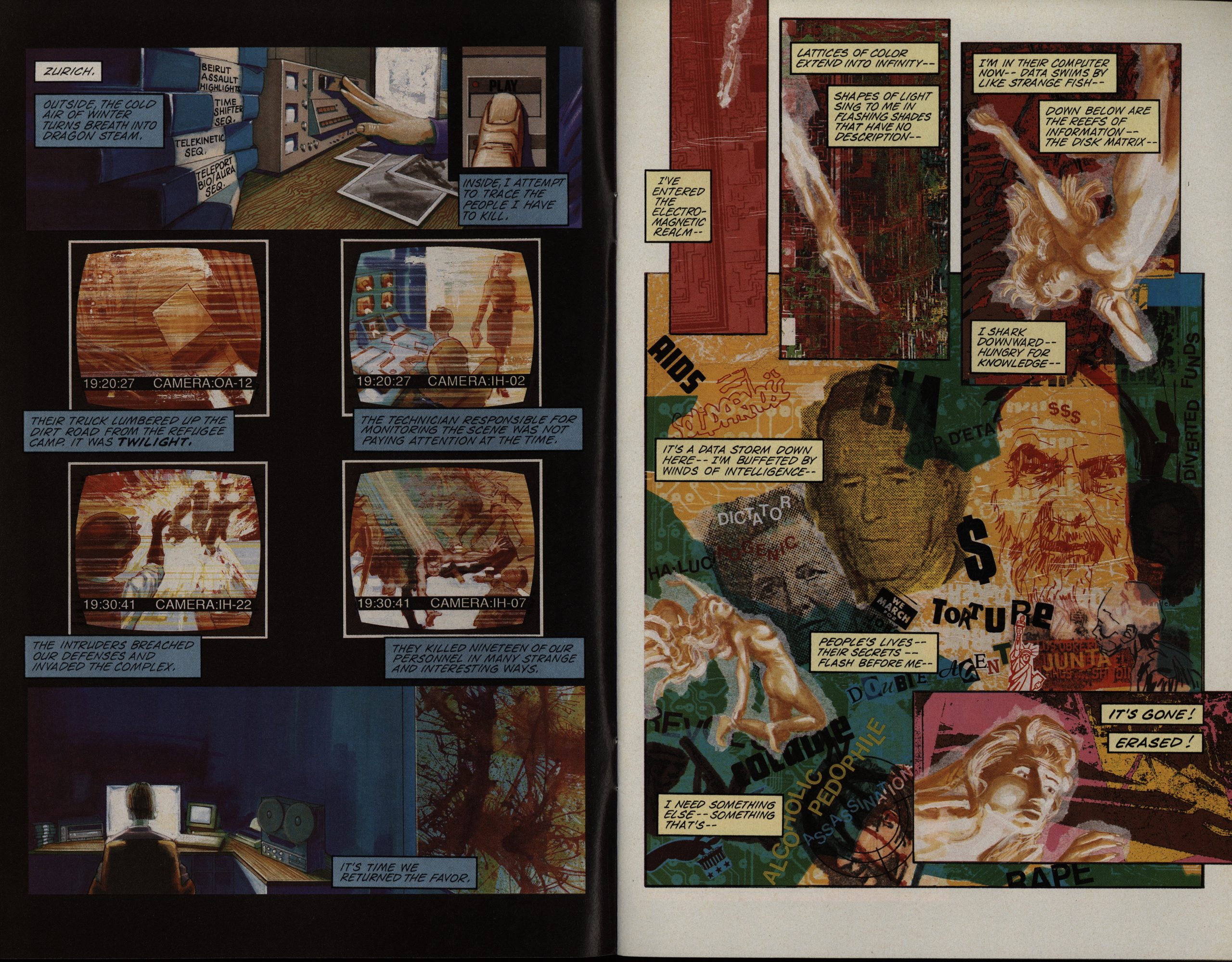
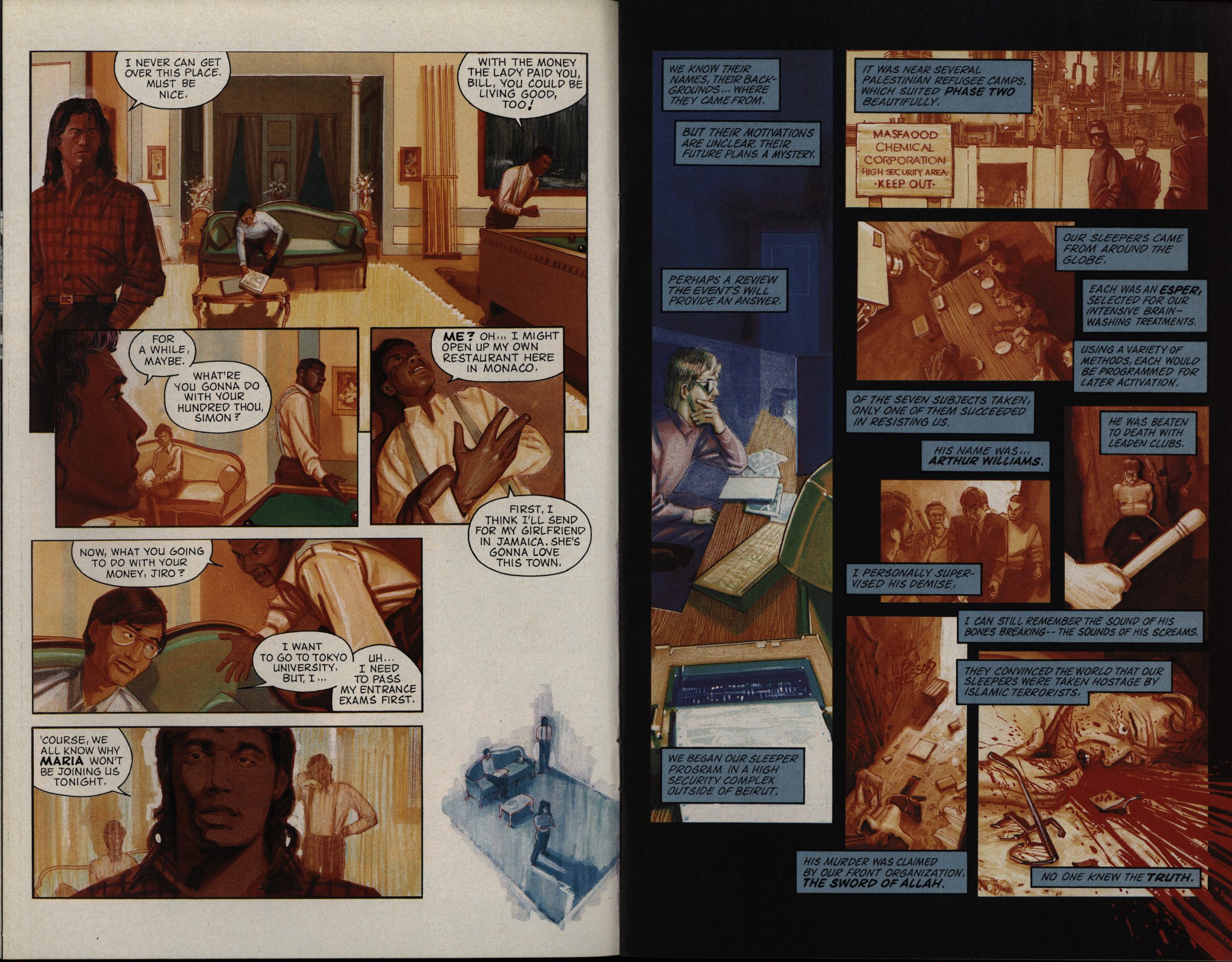
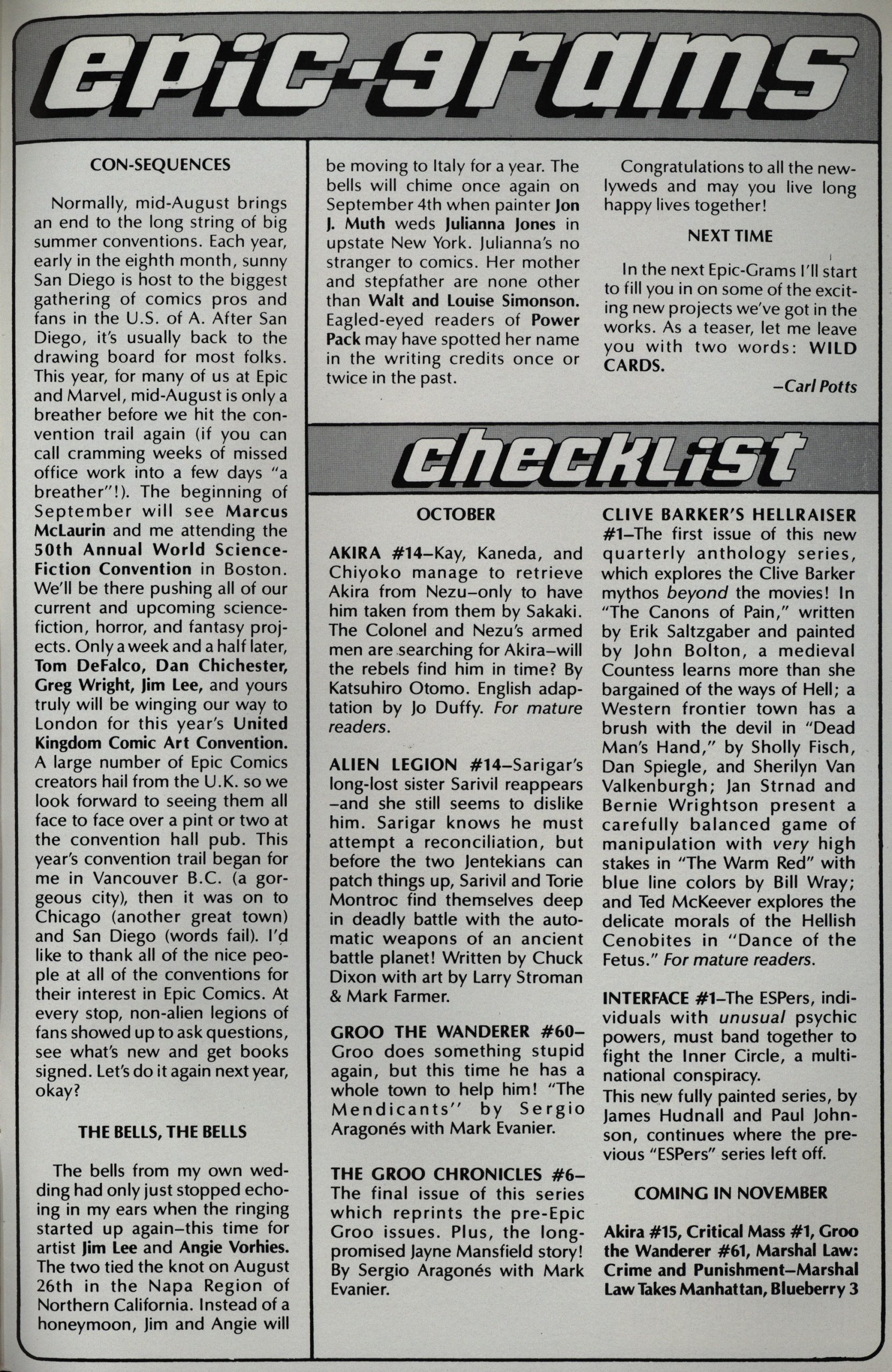
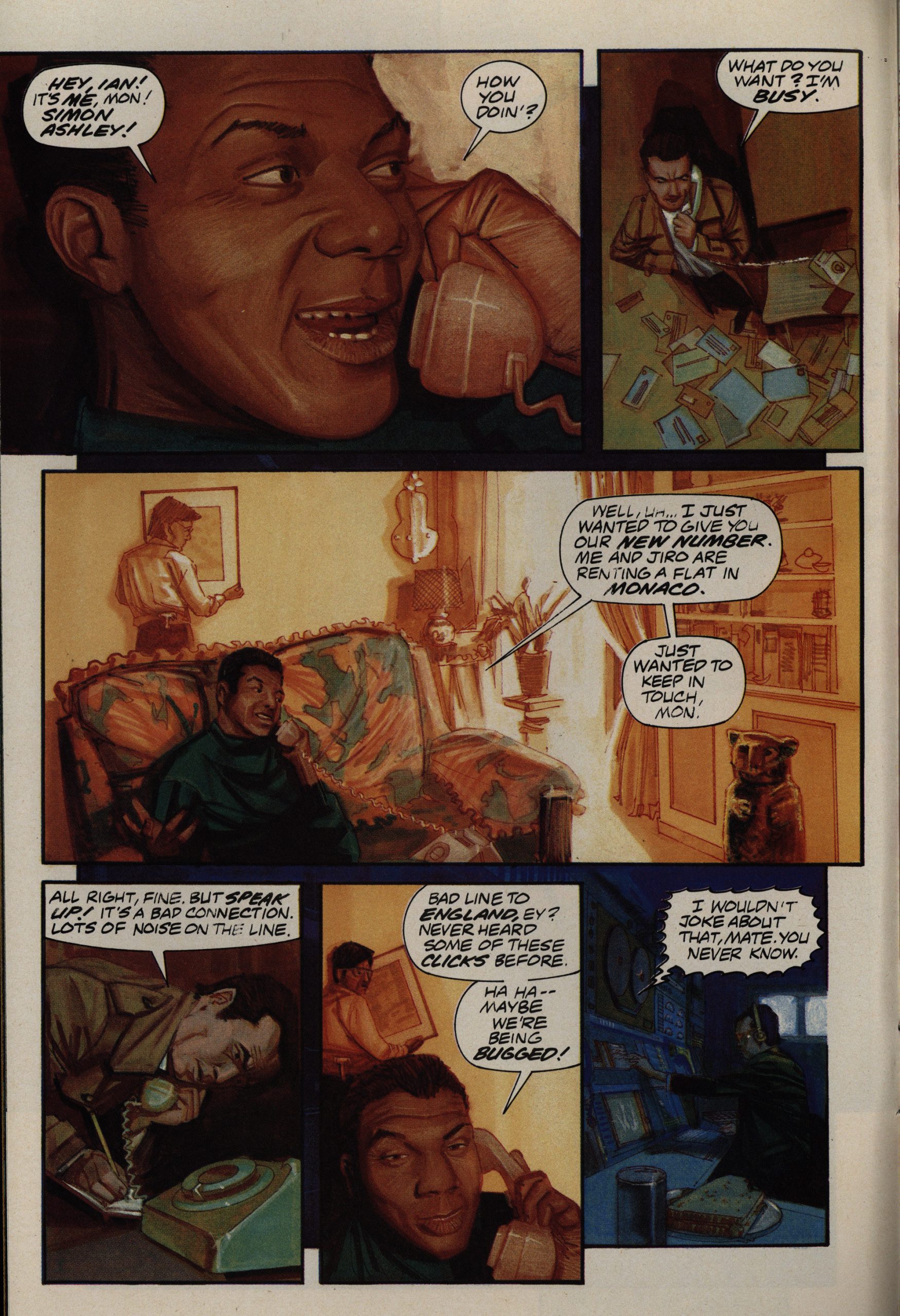
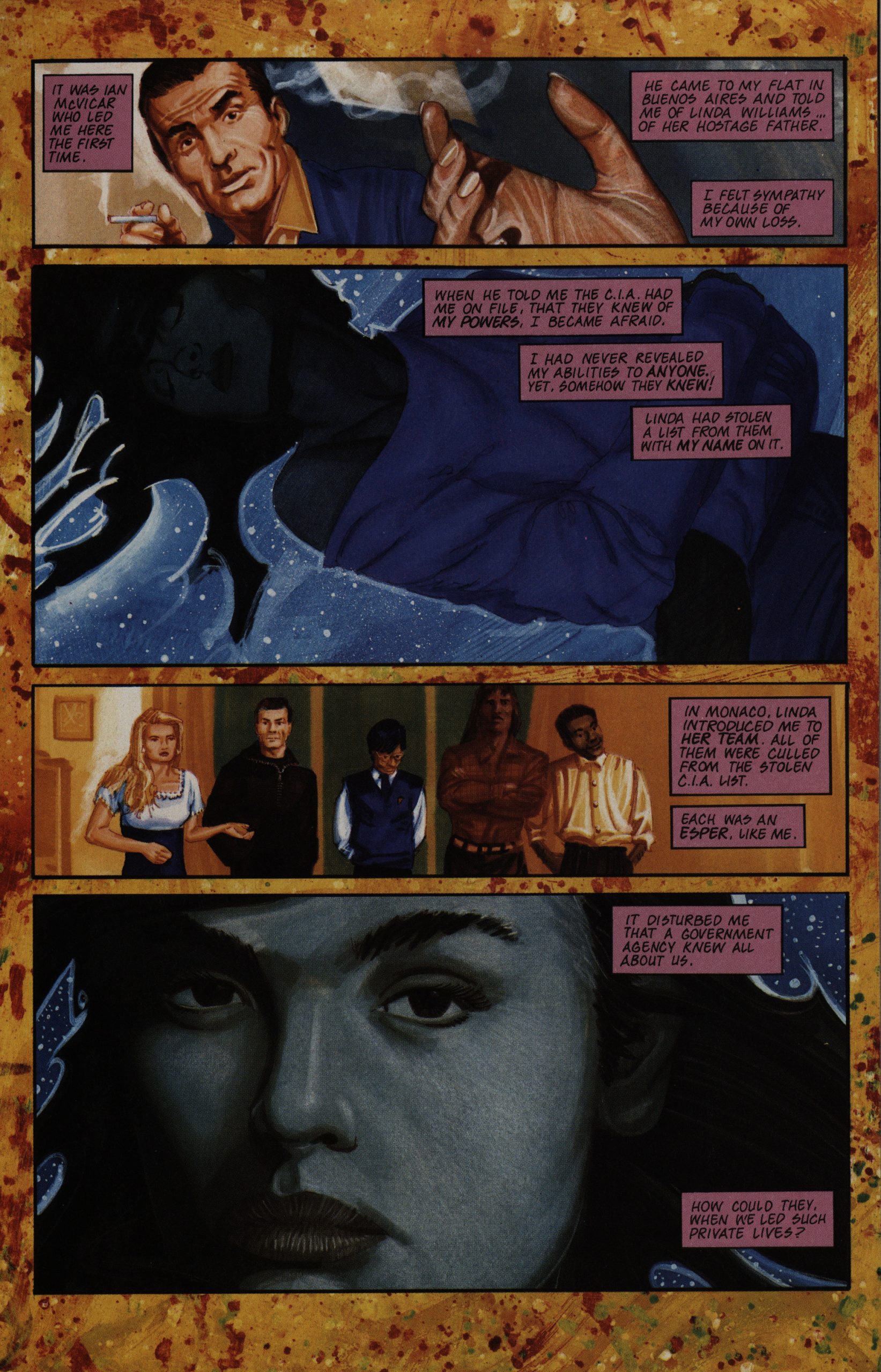
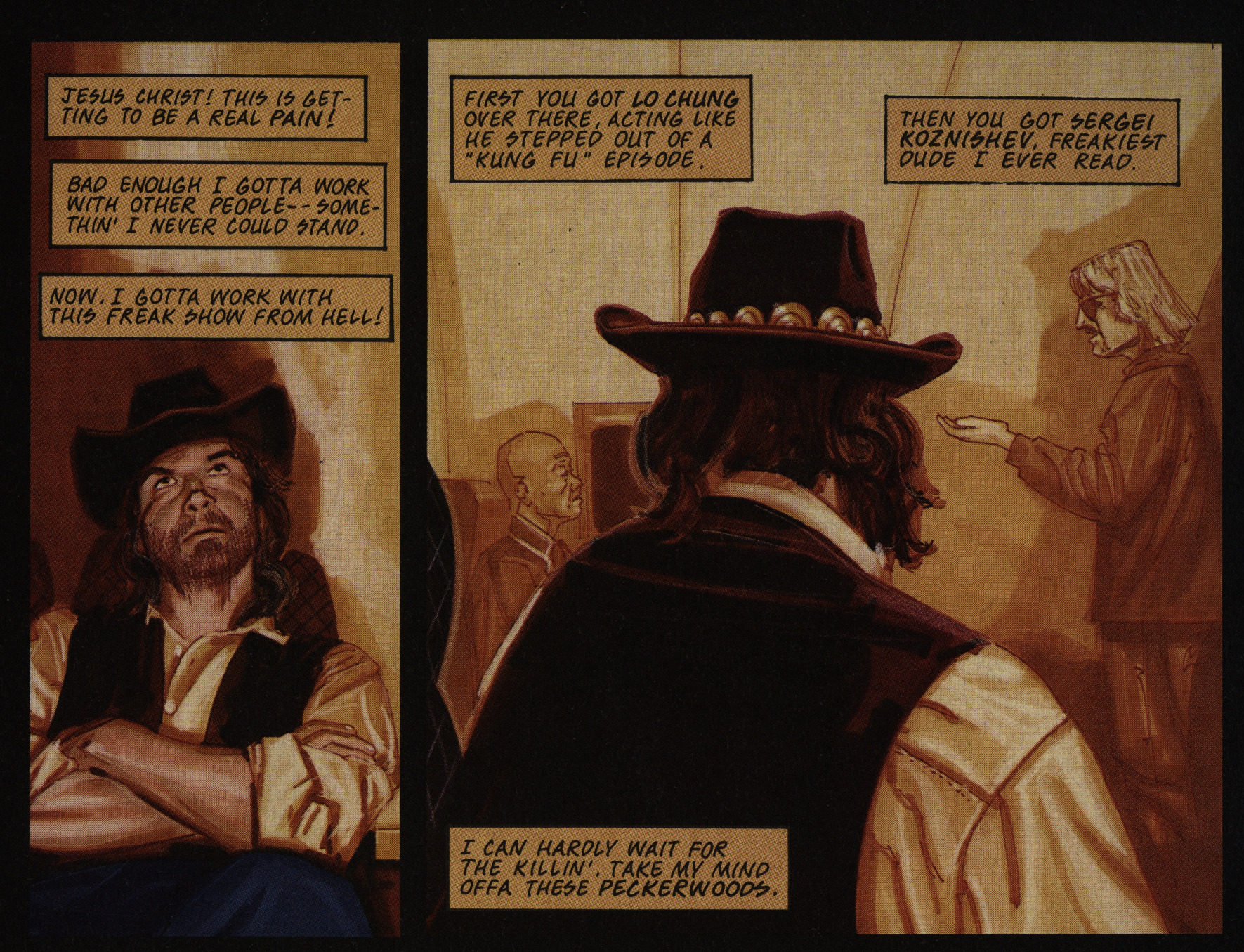
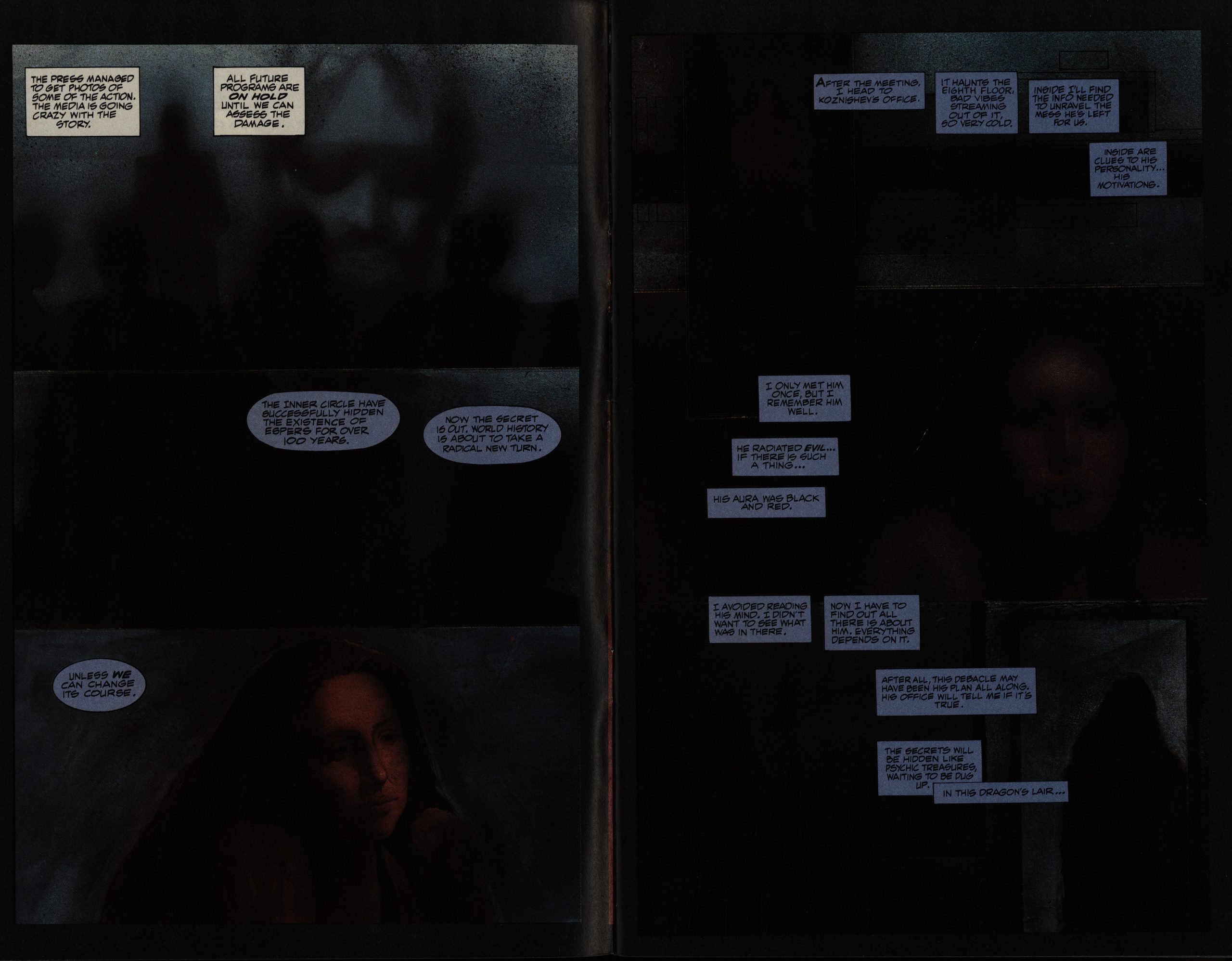
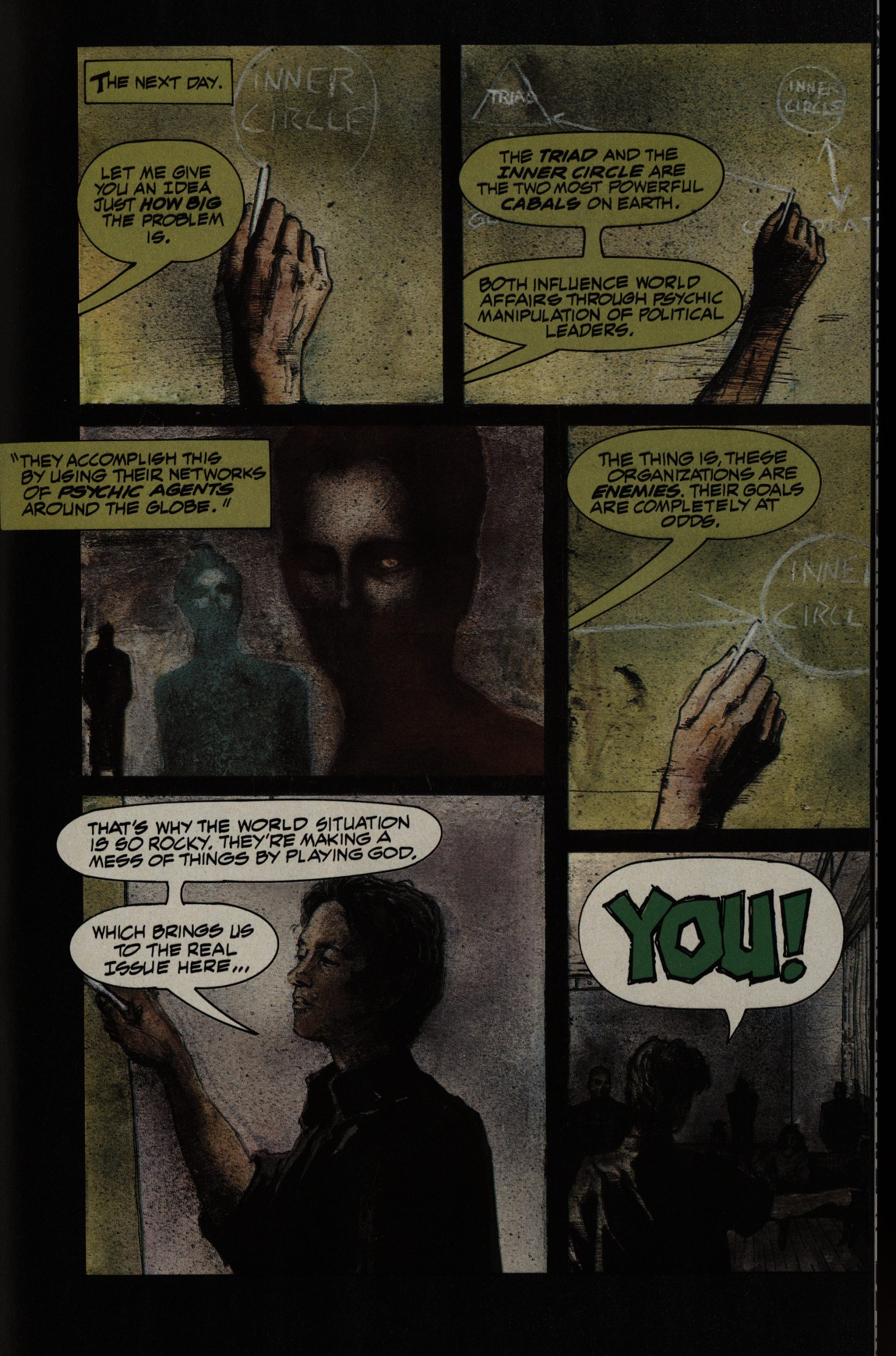
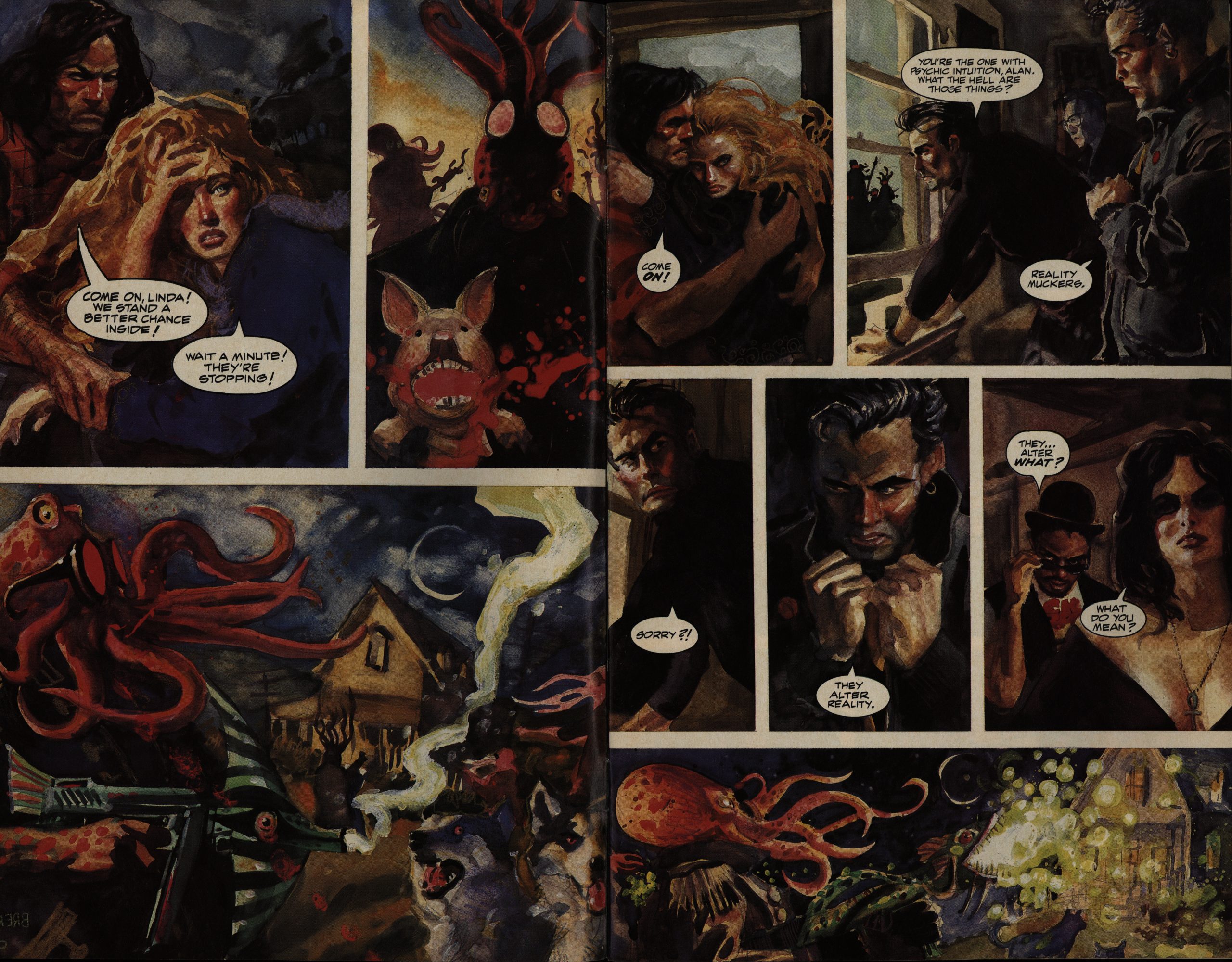
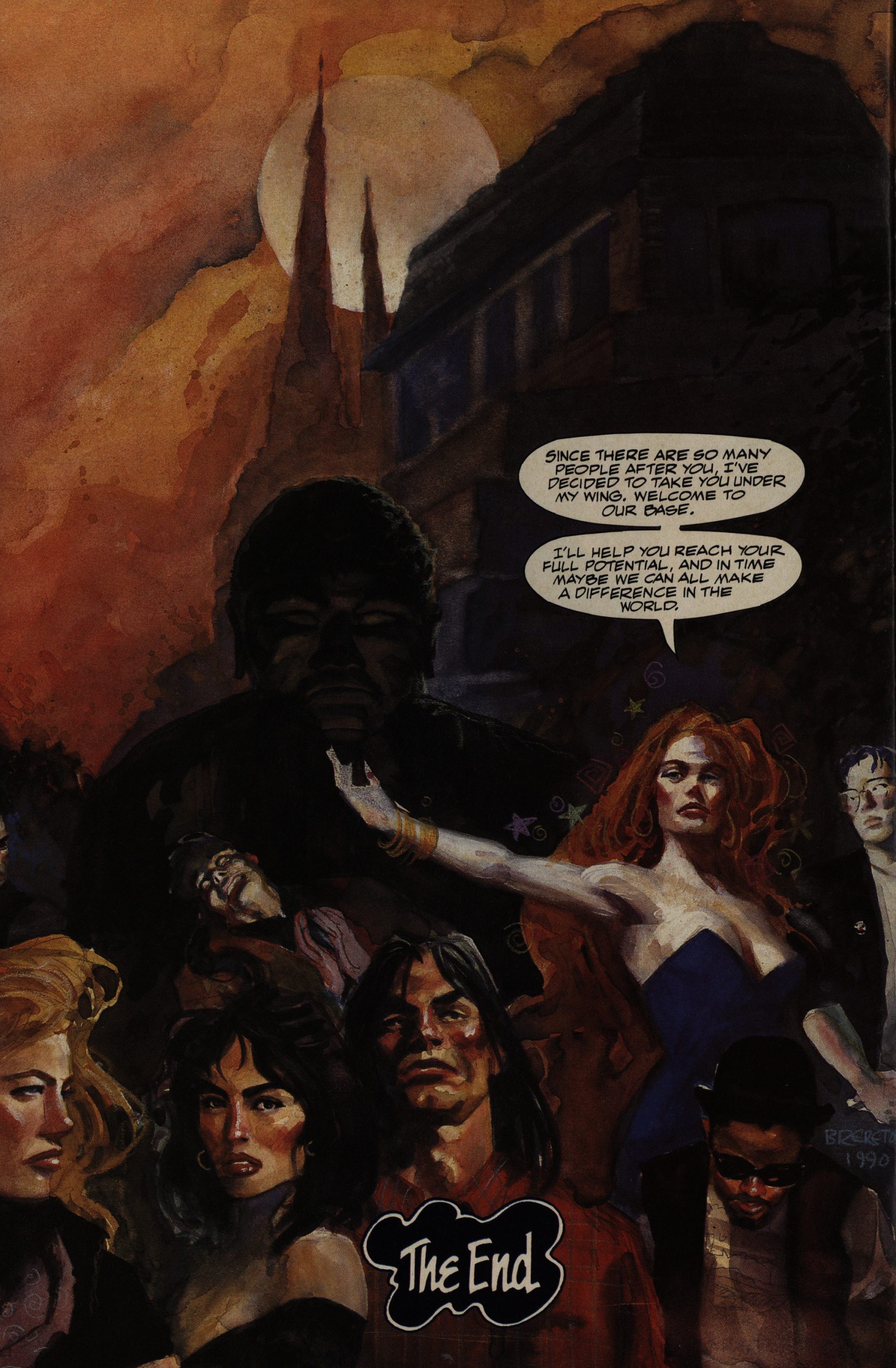
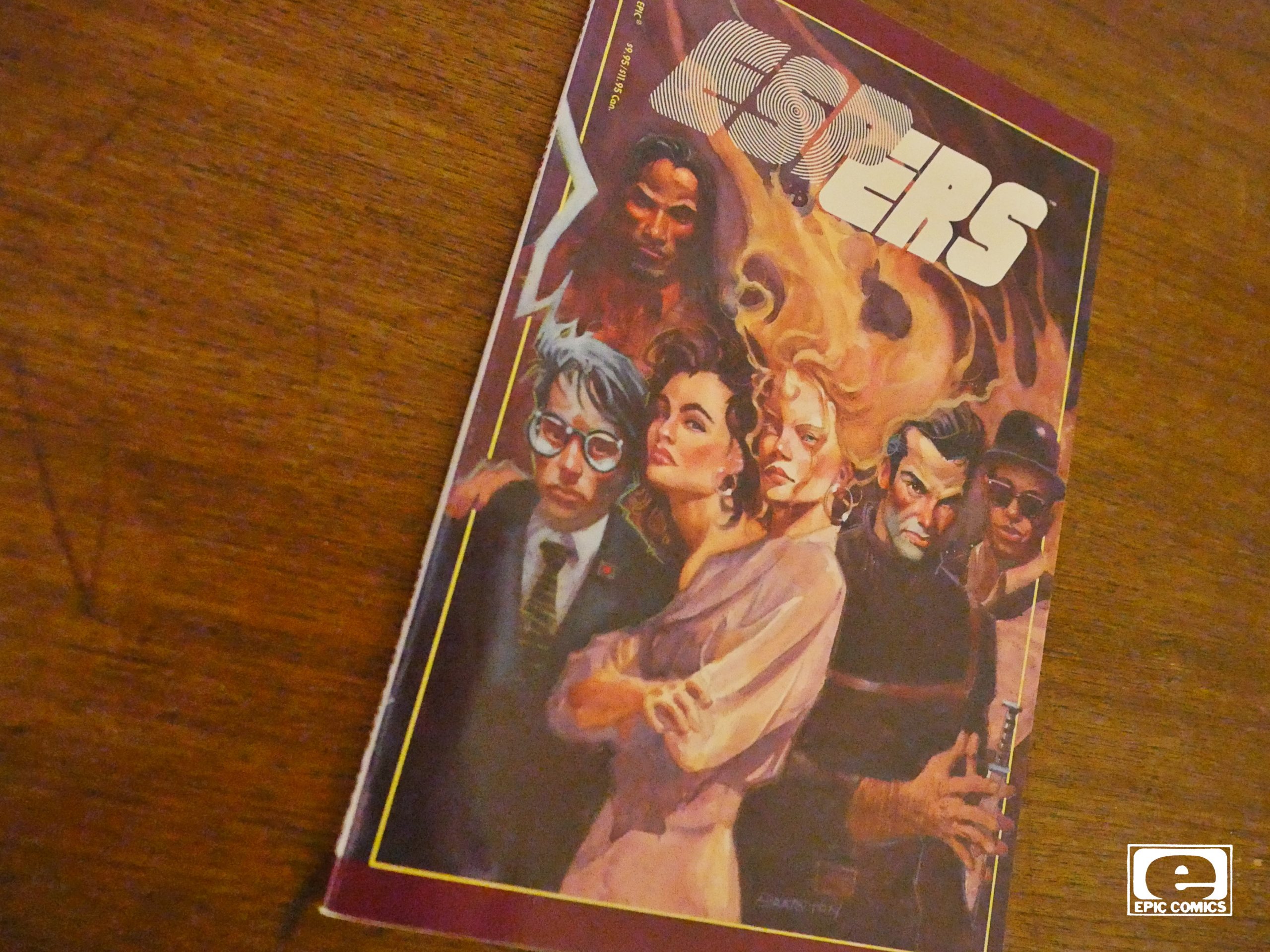
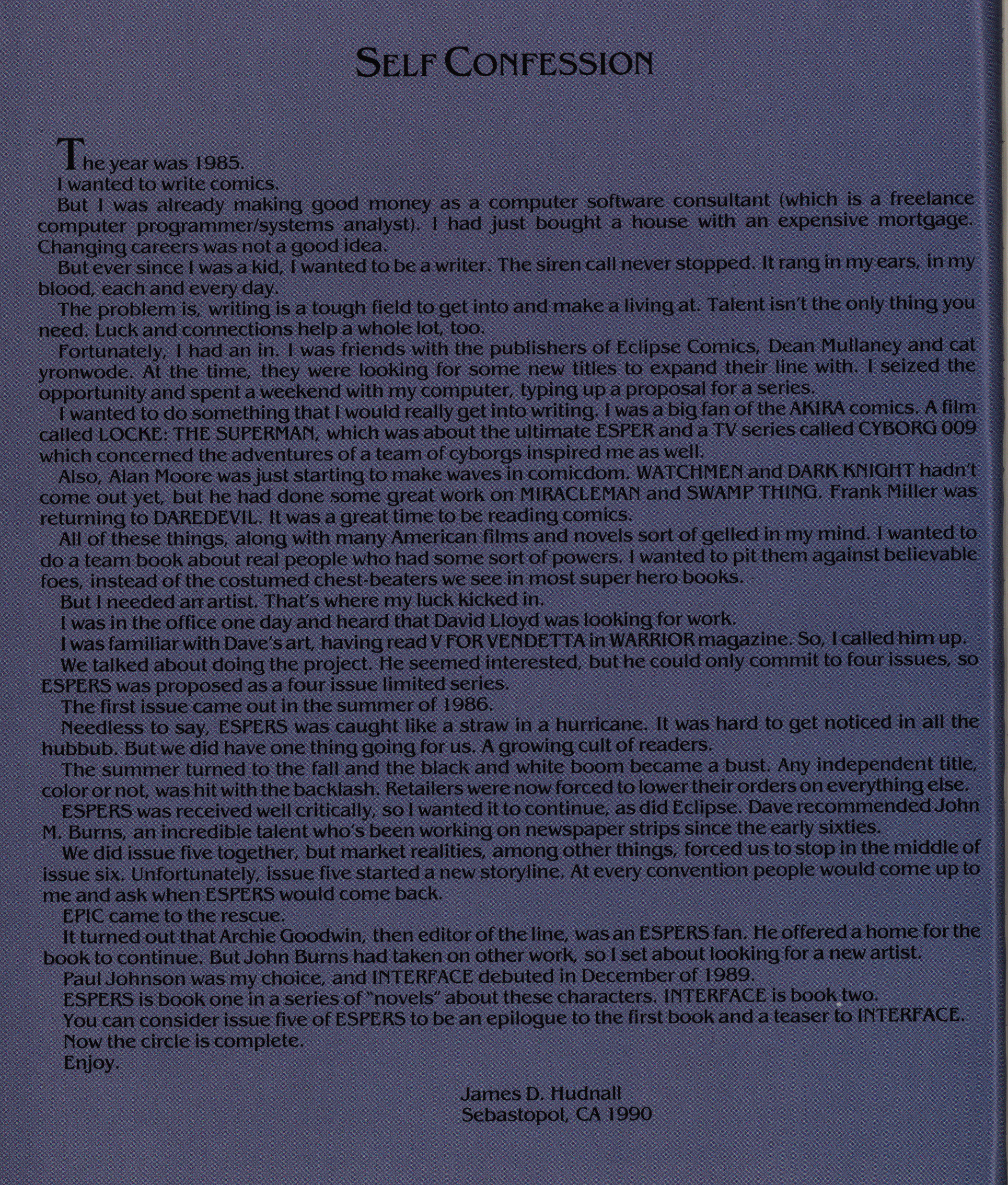
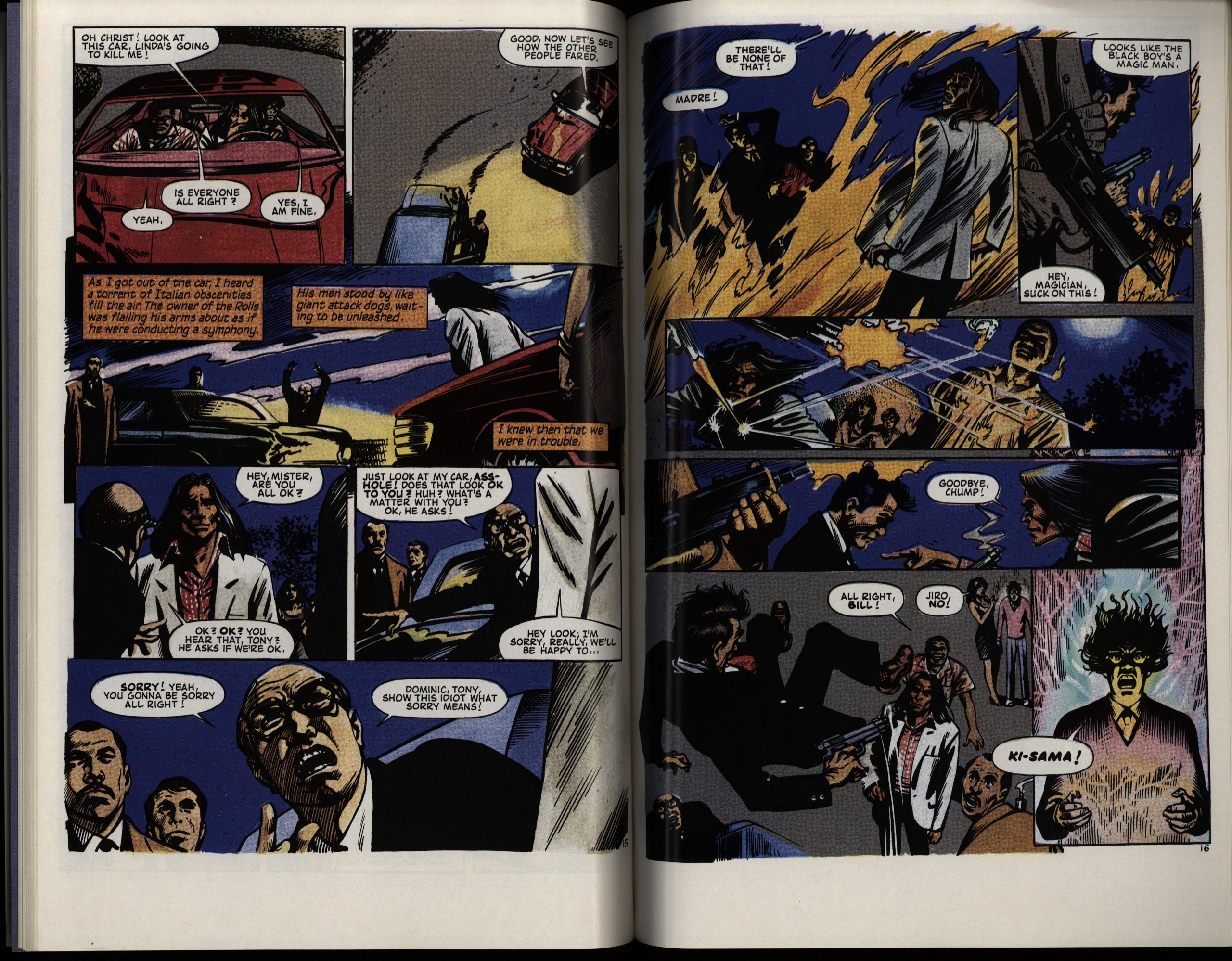
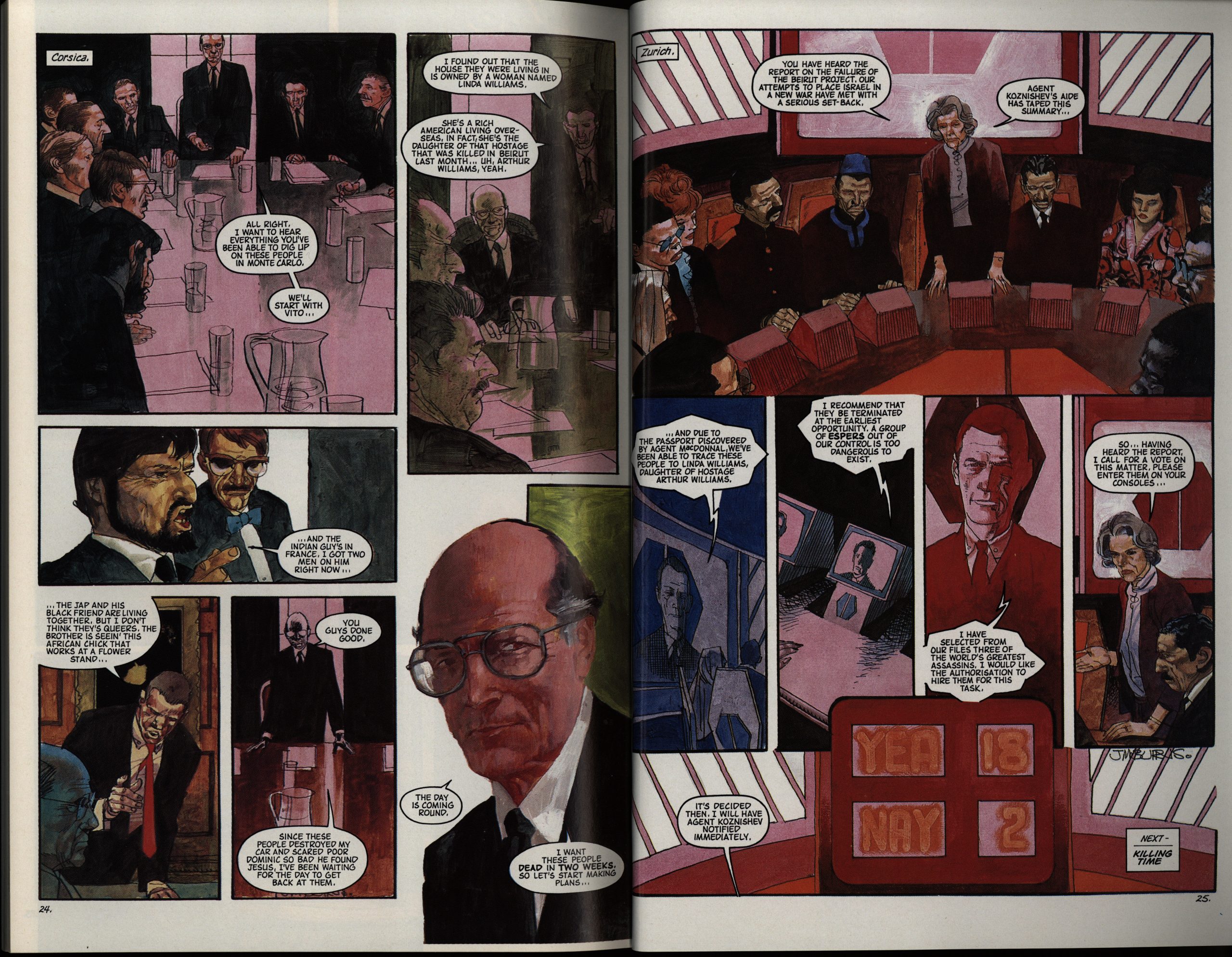
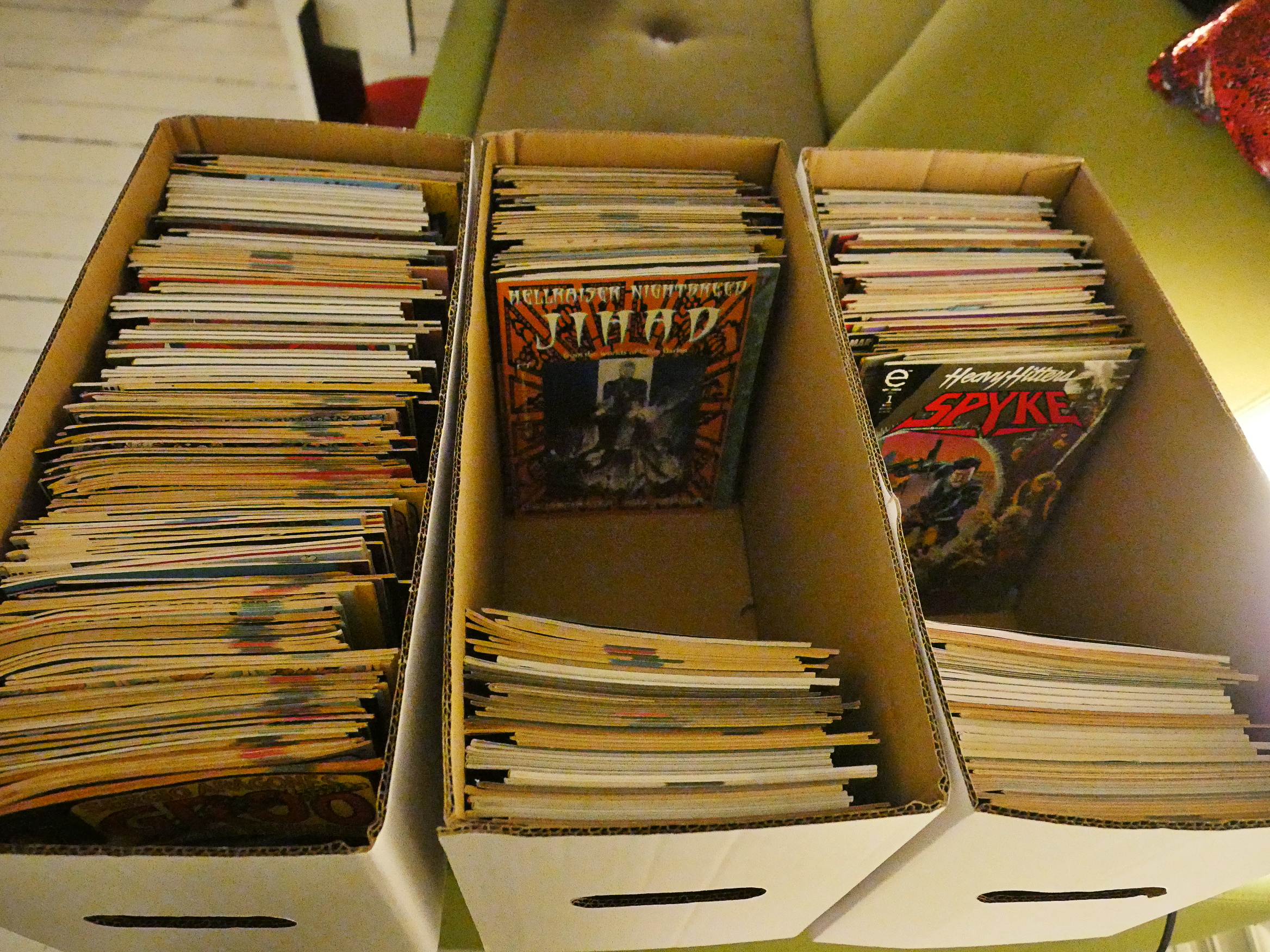
I’m all “wait, is that Dan Brereton all of a sudden” and then literally the next words in the blog post are “Insane artwork by Dan Brereton!” 😀
“And I must admit that I have no idea what it’s about.” yeah that’s kind of my experience with Brereton’s artwork too, I’m mostly thinking “these are really nifty concept layouts, can’t wait to see what the final artist does with them…”